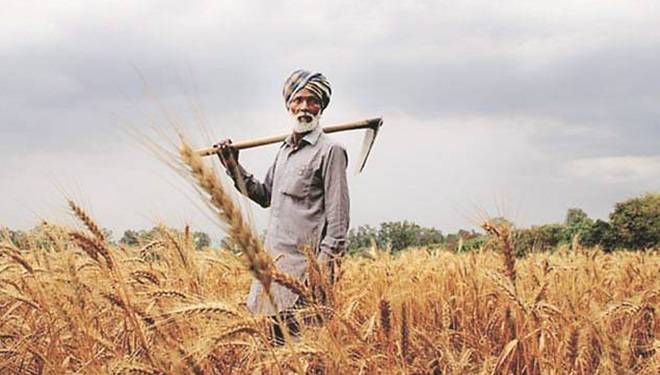Amidst the COVID-19 Pandemic induced lockdowns and travel restrictions around the world, the global economy is facing probably the worst economic downturn since the Great Depression during the 1930s. The Indian economy too has not remained insulated as it has come to a grinding halt in order to break the chain of transmission of Coronavirus. While the world economy has shrunk by 3.2 per cent, India’s economy has remained on the positive growth territory and is set to grow at 1.2 per cent in 2020. Only the agriculture sector in India is projected to have a promising year as farmers prepare for a bumper crop this season.
The relatively better performance of the Indian economy can be directly attributed to the above-average performance in the agriculture sector. The Rabi season has gone well and the farmers expected record harvest this year. As per latest reports, India’s wheat produce is set to hit a record 100 million tonnes for the first time. This is a heartening development and reinstates our faith in the agriculture sector as it comes to the rescue of an ailing Indian economy.
As the Indian Meteorological Department (IMD), the public weather forecaster of the country has predicted that the country would receive normal monsoon this year, the Kharif crop is also expected to go well. And therefore, the Agriculture sector is expected to be the saviour of the Indian economy in this gloomy year.
The Agriculture sector is punching above its weight to ensure that the Indian economy keeps growing at a time when the world economy is shrinking under the weight of Coronavirus induced lockdowns and travel curbs.
The primary sector of the Indian economy is picking up and mitigating the effect of COVID-19 Pandemic on the Indian economy. Modi government had decided to open up the Agriculture sector from April 20, and thus the sector has not suffered disastrously due to the nationwide lockdown.
Last month, Union Agriculture minister Narendra Singh Tomar had said, “Agriculture growth will get impacted a bit but not a lot. Farm produce has been robust this year and we are trying for complete procurement and ensuring that farmers get their due price. Procurement is happening at MSP. There is no question of farmers not getting their due.”
Meanwhile, Union Finance Minister Nirmala Sitharaman has announced that the Modi government will spend as much as Rs. 3500 crores on food supplies for 80 million migrant workers over the next two months, in order to mitigate the hardships that they have been facing due to the ongoing migrant crisis.
The announcement is a part of Prime Minister Modi’s mega Rs. 20 lakh crores revival package that was announced on Tuesday. In the context of this announcement, record wheat production is a major relief for the Union government.
India has managed to augment the production of wheat, which is a staple grain in most parts of the country like never before. But there is a catch here- Agricultural Produce Market Committee (APMC) mandis where farmers are, by law, supposed to sell their produce have to be kept de-congested owing to the Coronavirus Pandemic.
The government faces an uphill task of ensuring that the bumper produce doesn’t rot in bad storage conditions, further debilitated by the Pandemic that has hit the country.
And this is where the Amendments to the APMC announced by several BJP-ruled states- Uttar Pradesh, Gujarat and Madhya Pradesh can come in handy.
By allowing farmers to access the consumers directly instead of selling them at APMC mandis compulsorily, these states will ensure that agricultural produce can be picked up directly from farms avoiding storage bottlenecks, as agricultural output will land directly in private warehouses and godowns.
The bumper produce coincides with agri-sector reforms (at least in the BIP-ruled states), and the Coronavirus Pandemic might just lead to farmers truly capitalising upon their produce for the first time in India’s history.




























